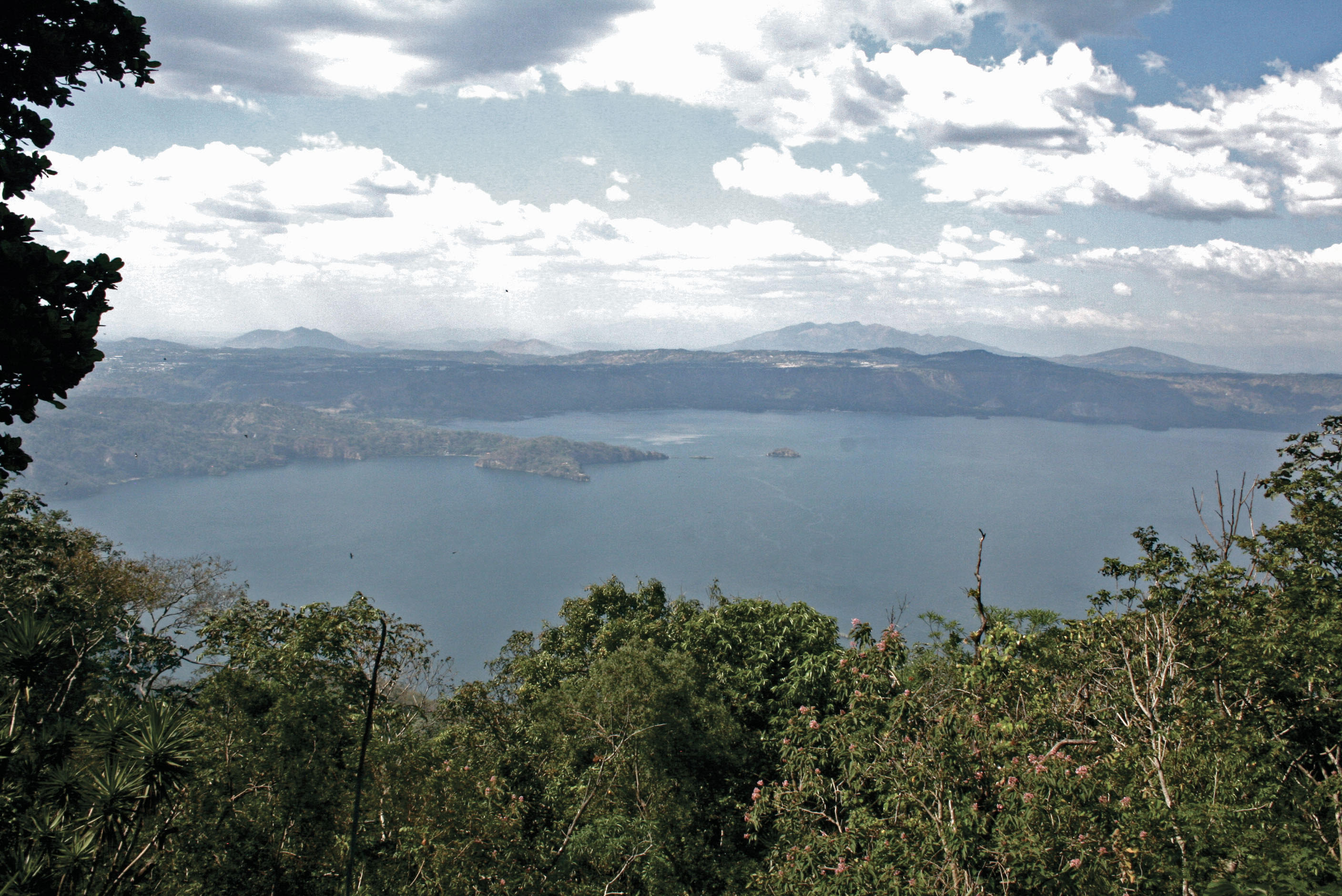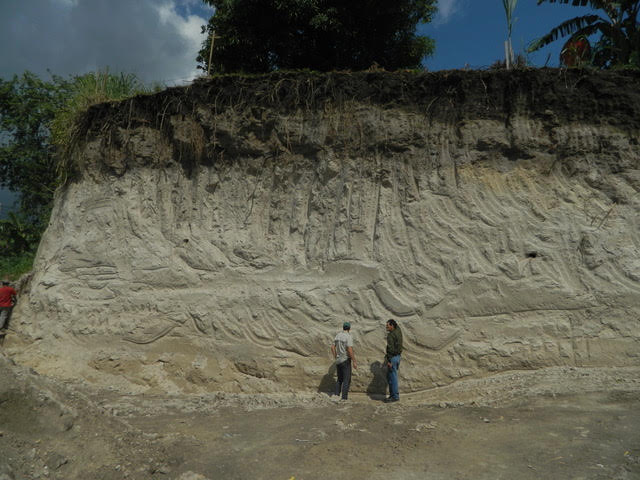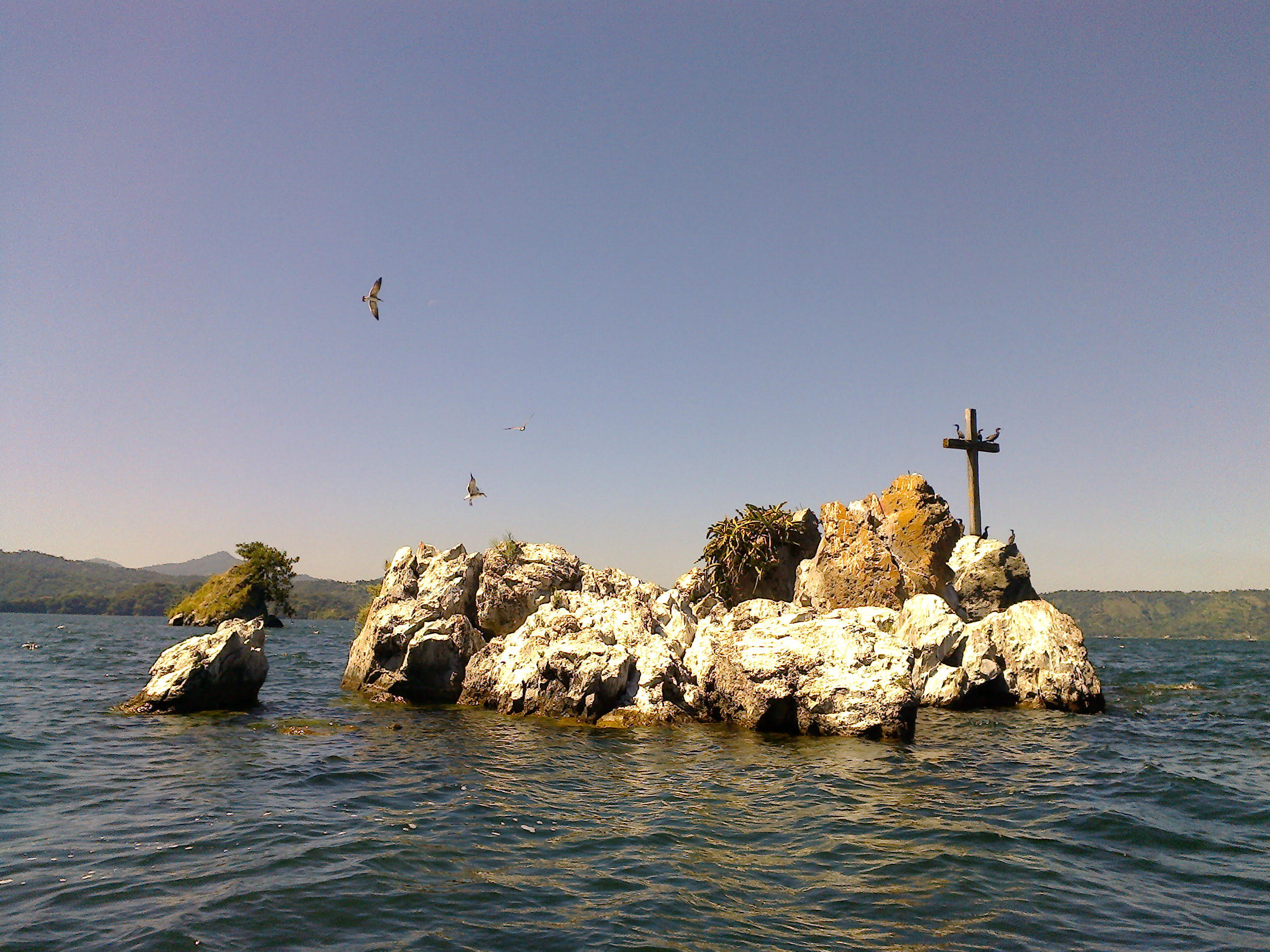Un approccio multidisciplinare ha consentito di identificare per la prima volta la data esatta della violenta eruzione che nel V secolo d.C. sconvolse la regione Centroamericana
Un team internazionale di ricercatori, cui ha preso parte l’Istituto Nazionale di Geofisica e Vulcanologia (INGV), ha individuato nel 431 d.C., con un margine di incertezza di circa due anni, la data esatta dell’eruzione della caldera vulcanica Ilopango, detta della Tierra Blanca Joven, nello Stato centroamericano di El Salvador.
L’obiettivo della ricerca era datare definitivamente l’eruzione chiarendo gli impatti che questo evento ebbe nella regione, sia sul clima e l’ambiente che sulla vita dell’uomo, facendo quindi un ulteriore passo in avanti rispetto agli studi precedenti.
La violenta eruzione, che si conosceva fosse avvenuta nel periodo compreso tra il 300 e il 600, ricoprì con uno spesso strato di cenere bianca e detriti (in parte ancora visibili) vaste aree di El Salvador, tra cui siti risalenti al cosiddetto “periodo classico” della antica civiltà Maya, rendendo inabitabile per decenni un’area nel raggio di 80 km dal vulcano.
Inoltre, alcune evidenze archeologiche indicano che, intorno alla data del 431 d.C., in El Salvador si verificò un’improvvisa interruzione della produzione delle ceramiche Maya, inattività quindi compatibile con il catastrofico evento naturale che colpì la zona.
Grazie a competenze multidisciplinari messe in campo dal gruppo proveniente da 12 Istituti di ricerca (tra cui l’Università di Oxford e l’UNAM, Università Nazionale Autonoma del Messico), gli autori dello studio ‘The magnitude and impact of the 431 CE Tierra Blanca Joven eruption of Ilopango, El Salvador’, appena pubblicato sulla rivista scientifica Proceedings of the National Academy of Sciences (USA), hanno combinato dati geologici e archeologici provenienti dall’America centrale con le analisi chimiche di carote di ghiaccio della Groenlandia e dell’Antartico.
“Per datare eventi eruttivi del passato per i quali non si hanno informazioni scritte”, spiega Antonio Costa, Direttore della Sezione di Bologna dell’INGV e co-autore dello studio, “si utilizza principalmente un metodo basato sull’analisi del decadimento del carbonio-14 nei frammenti organici inglobati dalla miscela eruttiva. Talvolta, come in questo caso, questo metodo non è sufficientemente accurato poiché la datazione tramite il decadimento del carbonio-14 deve essere calibrata. Il set di dati di calibrazione non è ben strutturato intorno al momento dell'eruzione e consente di individuare un arco temporale ampio ma non una data precisa. L’aspetto innovativo e determinante in questo lavoro, quindi, è stato senza dubbio l’approccio multidisciplinare che ci ha permesso di incrociare dati provenienti da discipline anche molto diverse tra loro per ‘triangolare’ la data che stavamo cercando da tempo”.
In particolare, è stato grazie a dei frammenti di vetro vulcanico rinvenuti nelle carote di ghiaccio prelevato in Groenlandia, datato 431 d.C., che è stato possibile individuare una corrispondenza con il materiale vulcanico emesso durante l’eruzione della Tierra Blanca Joven e datare, conseguentemente, l’eruzione stessa.
“Si tratta di un risultato molto importante”, prosegue Costa, “poiché nonostante si avesse già a disposizione una stima del periodo in cui si fosse verificata questa eruzione, soltanto con i risultati appena ottenuti abbiamo potuto datare univocamente l’evento”.
L’eruzione, secondo le stime effettuate dai ricercatori, avrebbe prodotto una colonna di gas e cenere alta circa 45 km. Grazie alla comparazione tra la datazione al carbonio-14 dei tronchi degli alberi abbattuti dalla forza dell’eruzione e rinvenuti nei residui del flusso piroclastico e le analisi chimiche dei prodotti eruttati e dei frammenti di vetro vulcanico presenti nelle carote di ghiaccio prelevate, è stato possibile individuare una corrispondenza che indica la provenienza dei reperti non soltanto dallo stesso arco temporale ma esattamente dallo stesso evento eruttivo.
Da un punto di vista climatico, inoltre, l’eruzione sembrerebbe aver raffreddato di mezzo grado centigrado la temperatura media della Terra su scala globale, anche se per un periodo piuttosto limitato di alcuni anni; gli effetti più intensi interessarono maggiormente la regione stessa del centro America in cui ebbe luogo l’evento.
“Ciò che è importante e interessante sottolineare”, conclude Antonio Costa, “è come i risultati ottenuti con questo lavoro abbiano delle implicazioni non soltanto per la vulcanologia ma anche, ad esempio, per la climatologia e l’archeologia, dirimendo quesiti scientifici rimasti finora irrisolti”.
LINK:
#ingv #pnas #tierrablancajoven #vulcano #elsalvador #maya
El Salvador, the true date of the mysterious and colossal eruption of the Tierra Blanca Joven that shook the Maya civilization discovered
A multidisciplinary approach made it possible to identify for the first time the exact date of the violent eruption which in the 5th century AD. shocked the Central American region
An international team of researchers, in which the National Institute of Geophysics and Volcanology (INGV) took part, has identified that in 431 AD, with a margin of uncertainty of about two years, there was an eruption, known as of Tierra Blanca Joven, of the volcanic caldera Ilopango in the Central American State of El Salvador.
The aim of the research was to definitively date the eruption by clarifying the impacts that this event had in the region, both on the climate and the environment and on human life, thus taking a further step forward compared to previous studies.
The violent eruption, which was known to have occurred in the period between 300 and 600, covered with a thick layer of white ash and debris (partly still visible) large areas of El Salvador, including sites dating back to the so-called “classical period” ff the ancient Mayan civilization, making an area within 80 km from the volcano uninhabitable for decades.
Furthermore, some archaeological evidence indicates that, around the date of 431 AD, in El Salvador there was a sudden interruption of the production of Maya ceramics, therefore inactivity compatible with the catastrophic natural event that struck the area.
Thanks to multidisciplinary skills put in place by the group coming from 12 research Institutes (including the University of Oxford and UNAM, the National Autonomous University of Mexico), the authors of the study 'The magnitude and impact of the 431 CE Tierra Blanca Joven eruption of Ilopango, El Salvador', just published in the scientific journal Proceedings of the National Academy of Sciences (USA), combined geological and archaeological data from Central America with chemical analysis of ice cores from Greenland and Antarctica.
“To date past eruptive events for which there are no written records”, explains Antonio Costa, Director of the Bologna Section of the INGV and co-author of the study, “a method based on the analysis of carbon-14 decay in organic fragments englobed by the eruptive mixture is mainly used. Sometimes, as in this case, this method is not sufficiently accurate since the dating through the decay of carbon-14 must be calibrated. The calibration dataset does not have much structure around the time of the eruption, which provides a wide time span and not an exact date. The innovative and decisive aspect in this work, therefore, was undoubtedly the multidisciplinary approach that allowed us to cross data from disciplines that are also very different from each other to ‘triangulate’ the date we have been looking for for some time”.
In particular, it was thanks to the fragments of volcanic glass found in the ice cores taken in Greenland, dated 431 AD, that it was possible to identify a correspondence with the volcanic material emitted during the eruption of the Tierra Blanca Joven and consequently date the eruption itself.
“This is a very important result”, continues Costa, “because despite the fact that an estimate of the period in which this eruption occurred was already available, only with the results just obtained could we uniquely date the event”.
The eruption, according to the estimates made by the researchers, would have produced a column of gas and ash about 45 km high. Thanks to the comparison between the carbon-14 dating of the trunks of the trees felled by the force of the eruption and found in the residues of the pyroclastic flow and the chemical analysis of the erupted products and the fragments of volcanic glass present in the ice cores collected, it was possible to identify a correspondence that indicates the origin of the finds not only from the same time span but from exactly the same eruptive event.
Furthermore, from a climatic point of view, the eruption seems to have cooled the average temperature of the Earth by half a degree centigrade on a global scale, albeit for a rather limited period of a few years; the most intense effects mainly affected the region of Central America where the event took place.
“What is important and interesting to underline”, concludes Antonio Costa, “is how the results obtained with this work have implications not only for volcanology but also, for example, for climatology and archeology, resolving scientific questions that have remained so far unsolved”.
#ingv #pnas #tierrablancajoven #volcano #elsalvador #maya
Link:

Foto 1 – Il vulcano Ilopango, responsabile dell’eruzione della Tierra Blanca Joven del 431 d.C. (TBJ). L’evento produsse un’eruzione di circa 55 km3 di magma da questa bocca, modificando la struttura della caldera vulcanica, oggi ricoperta da un lago. Ph.: Prof. Gerardo J. Aguirre-Díaz, UNAM, Messico
Photo 1 – Ilopango volcano, the source of the 431 CE Tierra Blanca Joven (TBJ) eruption. The enormous eruption erupted around 55 km3 of magma from this vent, which modified the collapse structure that is infilled by a lake. Ph.: Prof. Gerardo J. Aguirre-Díaz, UNAM, Mexico

Foto 2 – Spessi depositi di circa 4 metri dei flussi piroclastici della Tierra Blanca Joven in un sito localizzato 30 km a ovest rispetto al cratere del vulcano. Questi velocissimi flussi di gas e materiale incandescente hanno ricoperto e distrutto il territorio circostante in un raggio di 40 km. Ph.: Dr. Dario Pedrazzi
Photo 2 – Thick deposits (~4 m) of the Tierra Blanca Joven pyroclastic density currents at a site located 30 km west of the vent. These fast flows of hot particles and gas decimated everything within 40 km of the vent. Ph.: Dr. Dario Pedrazzi

Foto 3 – Islas Quemadas situate in mezzo al lago di Ilopango (la caldera che ha generato le eruzioni) prodotte durante le più recenti eruzioni di duomi lavici nel 1880. Ph.: Dr. Antonio Costa
Photo 3 – Islas Quemadas located in the middle of Lake Ilopango (the caldera that generated the eruptions) produced during the most recent eruptions of lava domes in 1880. Ph.: Dr. Antonio Costa




